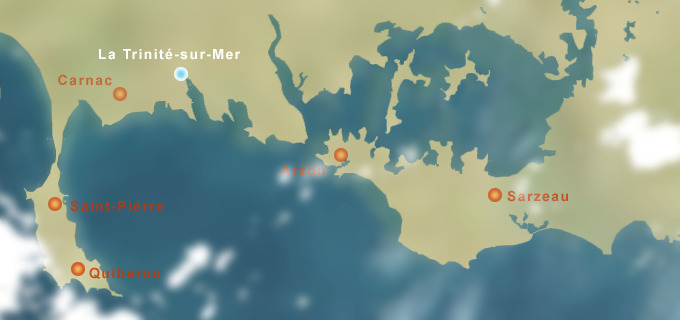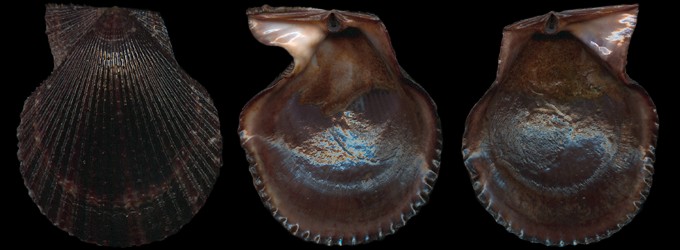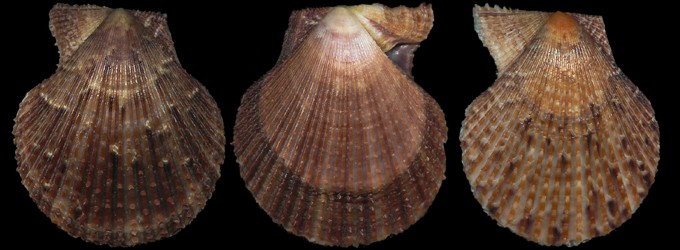...Without forgetting the inevitable Anomia ephippium & Crepidula fornicata.
Some other characters of this community are, of course, the Brittlestars (competition), Seastars (predation), sponges (association), soft corals, hydroids etc. Thus, to summarize, filter feeders and shell eaters in a beautiful balance... and Urchins.
Some other characters of this community are, of course, the Brittlestars (competition), Seastars (predation), sponges (association), soft corals, hydroids etc. Thus, to summarize, filter feeders and shell eaters in a beautiful balance... and Urchins.

The depth in this part of the gulf does not exceed the 20m (in the southern limit), most of the area being at 10-12m under the low tide level. North-east receives three rivers an a lot of small brooks.

The "Black Scallop", which is named "atra" by Locard, is the commonest form encountered in the bay.
It represents around 50% of the adult varia in this area. The interior is particulary impressive, with velvet reflections near the umbos (not clearly rendered on the pics).
It represents around 50% of the adult varia in this area. The interior is particulary impressive, with velvet reflections near the umbos (not clearly rendered on the pics).

The remainder of the population is mainly brown, mottled of light cream and dark spots. This is the average varia, which represents here only 40% of the shells. All the shell have well developped spines on their ribs, offering to many organisms an excellent anchoring, while the Crepidulas cannot cling.
Other colours:
Orange: 2%
Yellow: 1%
Brick red: 1%
Purple: 1%